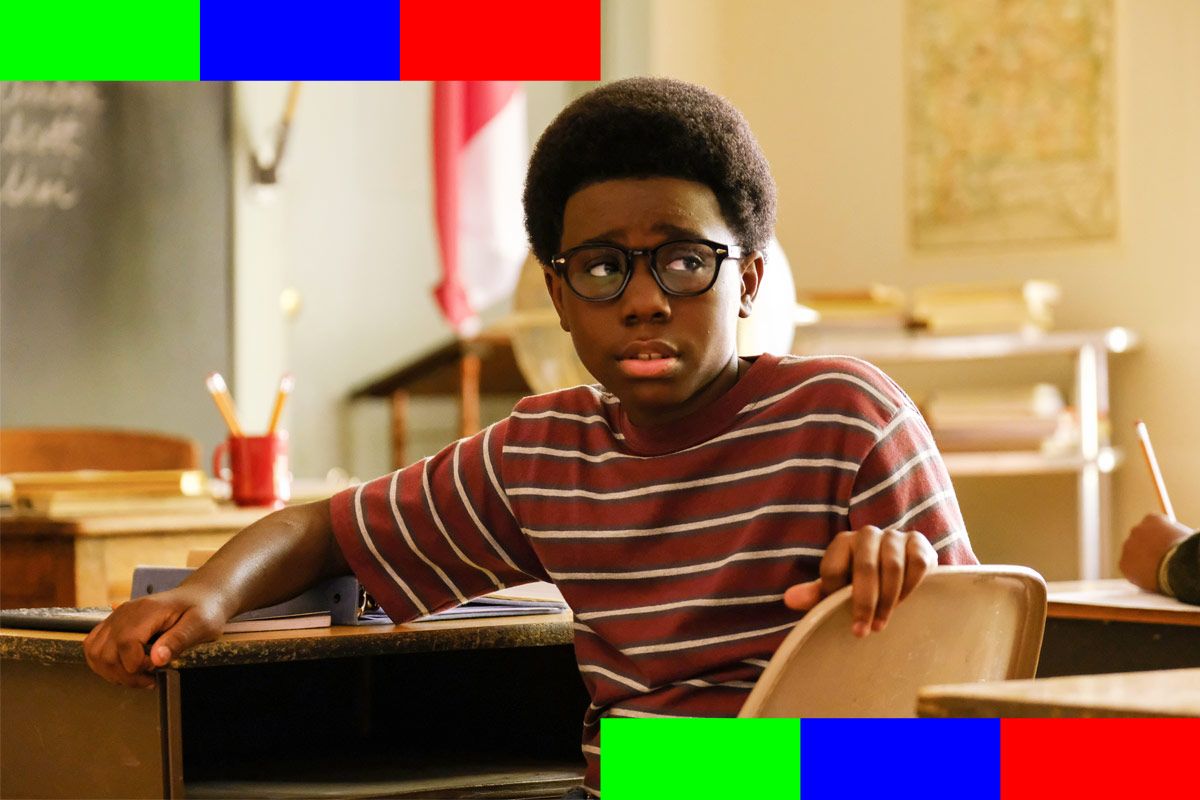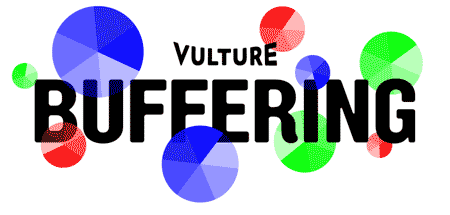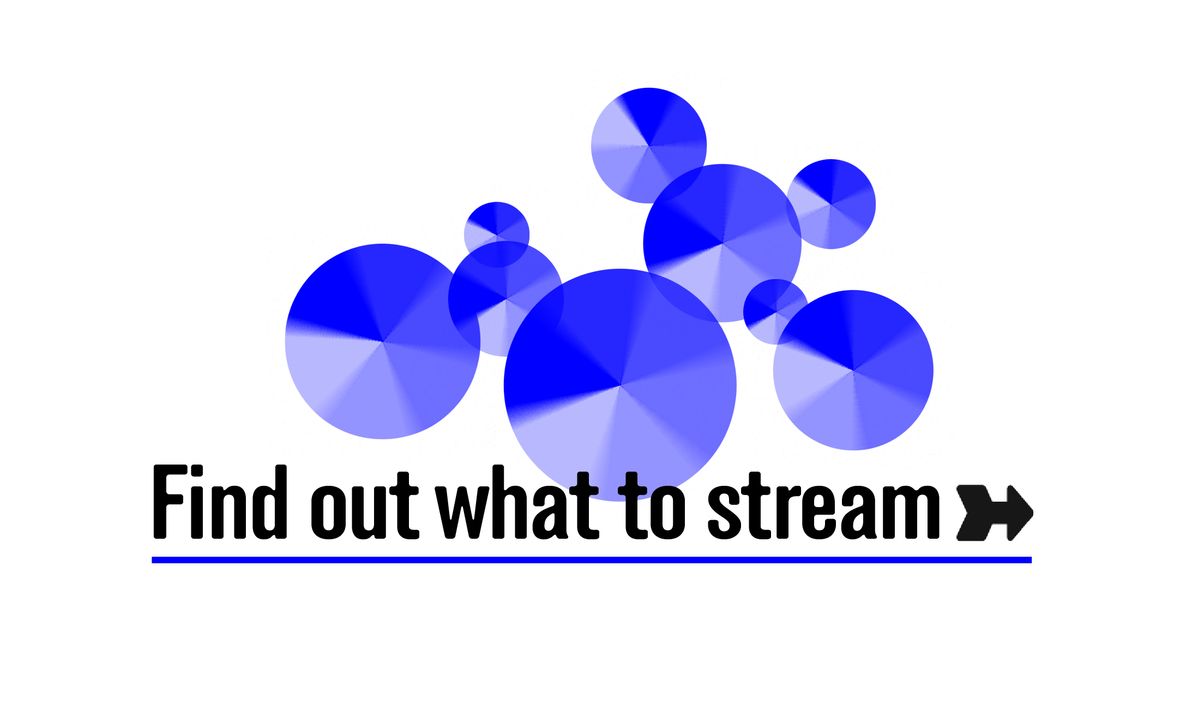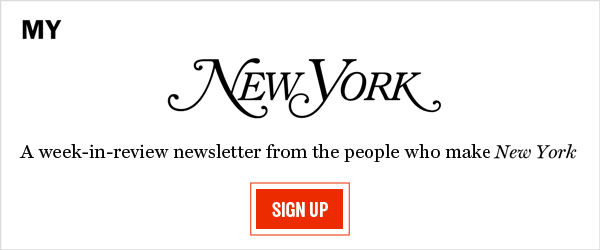 The Emmys are Sunday and one of the big headlines at the end of the night will be Netflix finally taking home more statuettes than HBO. The two platforms tied back in 2018, but with so many of HBOâs big guns not in the race this year â Succession, Barry, Curb Your Enthusiasm, Insecure â a Netflix win has long seemed likely. The results of last weekendâs Creative Arts Emmys sealed that outcome: Netflix heads into Sundayâs show having already collected a platform-best 34 awards, more than triple HBOâs current tally of ten. TVâs annual awards night also signals the start of a new season for the broadcast networks, and thatâs the focus of this weekâs Buffering. No shocker: Things arenât looking great for the old guys. But that doesnât mean the outlook is entirely awful. As always, thanks for reading. âJoe Adalian |
 |  | | Can the broadcast networks, including ABCâs The Wonder Years reboot, break through the streaming clutter this fall? Photo-Illustration: Vulture; Photo by ABC | | |
| CBS last week unveiled a new promotional video filled with stars of the network singing and dancing to a custom-made tune, all of them in unison exhorting audiences to âFeel This Fall.â Such spectaculars were annual occurrences as recently as the early 1990s; in 2021, the Eyeâs decision to craft a bona fide jingle felt almost defiant. Wall Street and media-industry insiders may have declared TVâs Network Era officially over, but by investing so much time and money in a promo campaign, CBS seemed to be announcing it wonât be going down without a fight â or at least some fancy footwork. |
| Unfortunately, dropping a few hundred thousand bucks on an extended commercial â even a pretty great one â isnât going to reverse the slow and steady decline of linear television platforms. Americans may still (amazingly) spend more hours watching broadcast or cable networks, but streamers keep gobbling up a bigger market share every year. Things are even more dire on the pop-culture front: Broadcast and basic-cable shows will barely be mentioned at this Sundayâs Emmy Awards, and Hollywoodâs top writers and actors now consistently take their best projects to streaming platforms first. |
| The folks still toughing it out in the broadcast biz are well aware of this grim reality, and ahead of next weekâs official start to the 2021-22 TV season, Iâd love to report they are brushing off all the gloom and pressing forward like it was still 2011. But that would be a lie. Instead, what many network execs are feeling this fall is ⦠depressed. âNobody is happy,â one suit with decades of experience in the network trenches told me this week. His diagnosis of whatâs behind this malaise is pretty simple: âNobody cares about broadcast TV.â Or, as another long-time network insider put it, âWe all went from being the center of the universe to being a distant planet.â |
| These emotions arenât new, but theyâve grown far more intense over the past year or two as the conglomerates that own ABC, NBC, and CBS have decided to prioritize the development of their respective streaming platforms over the health of their networks. Disney and Comcast even blew up the exec structures of their TV businesses so that program development at ABC and NBC is now overseen by the same execs handling Hulu and Peacock, respectively. The stated goal of the changes was to make certain shows end up on the right platform and are not derailed by internal squabbling, as well as to create a âvirtuous cycleâ wherein the broadcast networks help grow the streaming services and vice versa. |
| In reality, sources tell me, the streamers get all the attention while the networks increasingly get the shaft. âWe push shows and viewers to them and they do nothing for us,â the network suit says. Meanwhile, the aforementioned veteran TV insider compares the situation to what happens when an older child suddenly gets a sibling. âThereâs a new, cute little baby in the household and the older kid isnât getting as much attention,â he says. âBut the older kids end up changing the diapers a lot.â The situation is different at each network, of course, and not everyone who toils away at a broadcast outlet is unhappy. If you work in unscripted TV or news, youâve probably never been busier: The (slightly) lower-cost product that those divisions produce is now filling a lot more airtime than five or ten years ago. |
| Supplying Streamers With Hits |
| Still, many in TV Land are frustrated because despite all the focus on streaming, network execs are convinced the broad, mass-appeal shows theyâve been making for decades still remain very popular, even if overnight Nielsen ratings donât show it. âThe average viewer still cares about network shows,â one insider argues. This exec may sound delusional if you hang out all day on social media or only look to Emmy noms and magazine covers to determine what shows are clicking right now. But heâs actually not wrong: Audiences clearly donât watch as much TV via traditional methods anymore, but you donât have to look far to find evidence theyâre still into the shows linear networks are serving up. Netflixâs self-published top-ten lists and Nielsenâs streaming charts are both regularly filled with reruns of titles that originated on a broadcast or cable channel. And the roster of programs that allegedly âfailedâ or âunderperformedâ on regular TV but are considered âhitsâ on streaming keeps growing: The Mindy Project, You, Lucifer, Manifest, Emily in Paris, and more. |
| Fact is, the biggest problem for linear networks is that a huge chunk of their core audience has simply gotten fed up with the trade-offs required to watch their shows in the network ecosystem: 20 minutes of commercials every hour, the need for a $100 per month cable subscription, not knowing if this weekâs episode will be new or a rerun. Hulu and network-owned streaming apps grab back some of those viewers (and ad dollars), but for many, itâs much easier â or at least preferable â to simply wait nine months or a year until a full season of a network show is streaming somewhere. That viewership isnât captured in the ratings, but it still boosts the bottom line as long as the network owns the show. |
| Kelly Kahl, who runs the entertainment division at the Feel This Fall network, alluded to this new reality last week during an address to the TV Critics Association virtual press tour. While insisting the Eye remains âlaser-focused on the CBS mission to entertain mass audiences,â he admitted the changing TV universe requires networks to serve not just the CBS audience, âbut also the growing number of viewers that enjoy our content across our streaming platforms: Paramount+, the CBS App, and Pluto TV.â That has prompted Kahl and his team to develop new shows differently and then judge their success or failure differently as well. So while CBS still needs programs which get several million people to tune in every week, âWe want our shows to drive streaming, too, because our programming makes a substantial contribution to the successâ of the ViacomCBS streaming platforms. He also made sure to note that on-air promotion of Paramount+ and Pluto has helped spur new sign-ups and viewership for the Eyeâs digital siblings. âThe network is a huge promotional driver for those streaming assets,â Kahl said, echoing something insiders at other networks have told me as well. |
| Can the Problem Be Fixed? |
| None of this is to suggest that the issues facing broadcast TV are all the result of changing consumption habits among consumers, or that they can be easily fixed by making shows more accessible on streaming. Even though year-round development has become much more common in recent years, broadcast nets still rush too many projects from page to screen without giving producers time to get things right and work out flaws in casting or concept. (Foxâs Fantasy Island reboot could have been so much better with some lead time.) And while I get the value in franchises such as Law & Order or NCIS, I think networks too often underestimate the willingness of audiences to embrace new ideas or poke around outside their comfort zones. My retirement-age mom is a loyal viewer of a slew of CBS crime procedurals but this summer has also fallen in love with everything from Cable Girls and Lupin on Netflix to Only Murders in the Building on Hulu. Save for some four-letter words, thereâs no reason any of those shows â or shows like them, with less expensive stars and production budgets â couldnât work on a broadcast network. |
| For those of us who actually want to see the linear ecosystem thrive, the good news is I think networks actually are trying to evolve. Kahlâs remarks to TCA indicate CBS wants to figure out how new platforms can help it turn more shows into long-running hits. And thatâs not the only evidence of the Eye and other networks adapting: |
| ⢠It is encouraging that two very different kinds of CBS shows â the second season of the critically beloved Evil and the more, um, mainstream SEAL Team â are finding new homes on Paramount+ rather than ending up canceled. Eye execs smartly did a deal with Netflix last year to give Evilâs first season a promotional run on the streaming giant, resulting in a massive uptick in buzz and setting the stage for the shift to P+. Meanwhile, CBS plans to air the first four episodes of SEAL Team on its linear network next month before the show shifts exclusively to streaming with episode five. Itâs a savvy way of prompting SEAL Teamâscore viewers to check out Paramount+ if they hadnât already. |
| ⢠Over at Disney, Freeform and FX have both become major content engines for Hulu, allowing shows that a couple years ago wouldâve been considered âstrugglingâ based on linear ratings to be seen as clear wins for all involved. I know lots of folks who checked out Cruel Summer and Reservation Dogs whoâd have never watched either had they not been hyped on Hulu. |
| ⢠The NBC-Peacock assimilation remains a bit more baffling to me. While keeping AP Bio alive by shifting it to digital was an easy call, so far it seems NBCUniversalâs central operating theory is that anything new of worth should go to Peacock, rather than having both platforms boost each other. It was great to see Peacock pick up a second season of The Amber Ruffin Show, for example, but I still donât get why her show isnât being given a permanent slot on NBCâs late-night schedule, where it would almost surely aggregate a much bigger audience. Episodes would have to premiere first on NBC in order to avoid an affiliate meltdown, but could immediately stream on Peacock, just like NBCâs other late-night shows currently do. Similarly, letting Manifest slip away to Netflix feels like a completely missed opportunity, both for Peacock and NBC. |
| The other reason to be (a little bit) hopeful for network TV is that this seasonâs batch of new network shows has some particularly promising newcomers. Ghosts on CBS is the sort of big creative swing you wouldnât have seen by the network five years ago, while Foxâs The Big Leap had the most compelling trailer Iâve seen for a network show in years. ABCâs The Wonder Years is, yes, a reboot, but itâs being done in a clever, creative, and actually meaningful way by having the show focus on the Black experience in the 1960s rather than simply going for the easier nostalgia play of setting the show in the 1990s. And while I admit to not yet having watched NBCâs La Brea, I admire the networkâs commitment to investing in another big, ambitious, effects-heavy mystery à la Lost (though hopefully it turns out more like Manifest than duds such as Debris and The Event). These new shows might not work, but I do think they are evidence thereâs at least a little life left in the broadcast TV model, despite the generally dark mood at the networks right now. Whether the giant companies that own the networks are as optimistic is an entirely different question. |
| Enjoying Buffering? Share this email with your network or subscribe now to get the newsletter in your inbox every week. |
| ⢠Thanks to acquisitions such as Manifest and the just-ended Lucifer, plus original series like the short-lived Country Comfort, thereâs been a lot of talk the past year or two about how Netflix is starting to look more and more like broadcast TV. It doesnât matter that the service is also greenlighting projects such as The Chair and The Queenâs Gambit: Skeptics (read: rival platforms) have put out the word that Netflix wants to be the new CBS. Thatâs nonsense, of course, and the streamer is now pushing back on the notion. In his first in-depth interview since being put in charge of U.S. and Canadian scripted TV this summer, Netflixâs Peter Friedlander tells THRâs Lacey Rose he has no intention of ceding the artisanal TV space to Apple TV or HBO. âI really want to emphasize that there is no mandate toward âdown the middleâ,â he says. âWeâre trying to guide people toward the best version of the story theyâre trying to tell. If itâs meant to be edgy, it should be edgy.â Friedlander also addresses those persistent rumors that Ryan Murphy wonât be staying at Netflix when his deal expires in 2023. |
| ⢠Netflix was apparently having a 2-for-1 sale on executive interviews because THR this week also had some quotes from Friedlanderâs boss, Netflix global content chief Bela Bajaria. Talking to the magazineâs James Hibberd, she offers some smart context about that deal to snatch up 20 episodes of Manifest. While she loved seeing the show trend on Twitter for days on end, social media isnât what spurred her to go after the NBC drama. âTo save a show in this way, it has to have that fan viewing,â Bajaria says. âI appreciate [fan] passion and being connected to the characters, but the viewing is the thing that saved the show.â Like Friedlander, she also makes it clear Netflixâs investment in critically-ignored popcorn fare such as Manifest doesnât represent a strategy shift for the streamer. You can read Hibberdâs deep dive here. |
| It happened this week â letâs talk about it.
Sign up for My Week in New York: a new newsletter from the editors. |
| |
|




